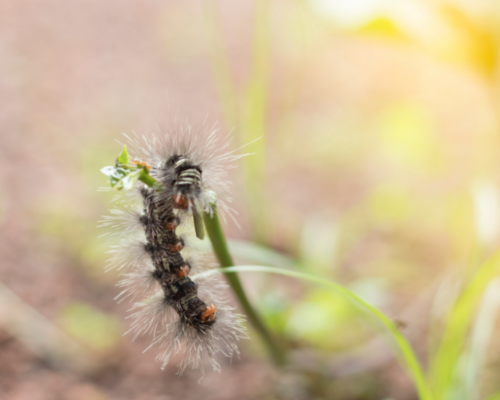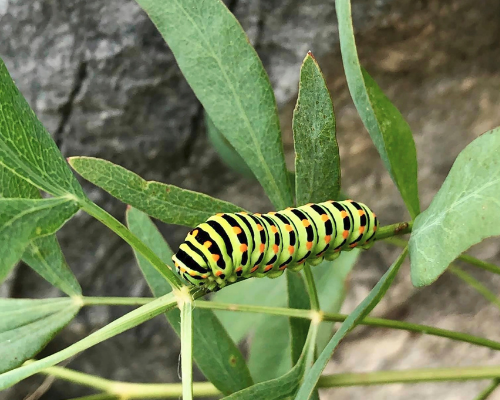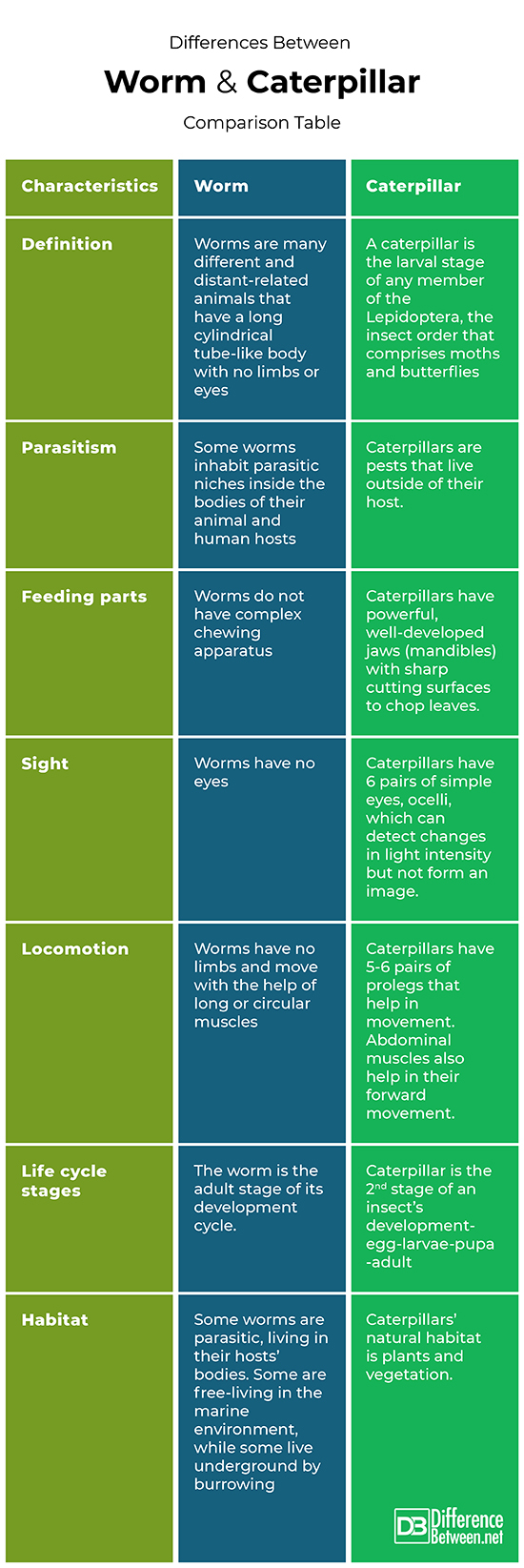Differences Between Worm and Caterpillar
Most people think that caterpillars are worms. Some would even bet on it. But did you know the two are different? Join me as we explore some interesting differences between the worm and the caterpillar in this article.

What are Worms?
Worms are many different and distant-related animals that have a long cylindrical tube-like body with no limbs or eyes. They can, however, detect sunlight. They move with the help of long or circular muscles. They vary in size from microscopic to over 1 meter in length. Examples are the African giant earthworm (6.7metres) and the marine nemertean (bootlace) worm which is 58 meters.
Various worms are parasitic, occupying a small variety of parasitic niches inside the bodies of their host animals or humans. Some are free-living but not on land. They inhabit marine or fresh-water environments or live underground by burrowing. Most worms are invertebrates, meaning they have no backbone. A few exceptions include the amphibian caecilians and the slowworm Anguis, a legless burrowing lizard. Examples of worms include annelids such as earthworms, roundworms, flatworms, marine worms, and insect larvae such as grubs and maggots.
Worms can replace or reform part of their bodies which is an interesting aspect of their identification.
They do not have complex chewing apparatus, but some have small teeth and jaw mouths.

What is a Caterpillar?
A caterpillar is the larval stage of any member of the order Lepidoptera, which is the insect order comprising butterflies and moths. Caterpillars of most species eat plant material (often leaves), some eat insects, and some are cannibalistic. Some feed on other animal products like clothes moths feed on wool, and horn moths feed on the hooves and horns of dead animals.
They are voracious feeders and are considered among the most serious agricultural pests. Other species are valued for sources of silk, as human or animal food, or for biological control of pest plants.
Caterpillars have soft bodies that can grow rapidly. Their size varies between species from as small as 1 mm up to 14 cm. Caterpillars have twelve simple eyes (six on each side of the head). They have a true head with an inverted Y or V (ad-frontal suture).
Caterpillars have two types of legs:
- Thoracic legs- They have three pairs of jointed legs with hooks attached to the thorax. They use these to hold onto their food.
- Prolegs- These are stumpy legs that allow a caterpillar to climb very well even up vertical surfaces. They have five pairs of prolegs attached to the abdomen and one proleg at the rear of the abdomen called the anal proleg. This last pair is absent in the adult stage. The prolegs have grasping hooks called crochets on them.
They are edible by humans since they are good sources of protein. They have developed defense mechanisms such as bright coloring and camouflage to keep off predators.
Similarities between Worm and Caterpillar
- Both have soft bodies.
- They are both cold-blooded.
- Both can be voracious feeders of vegetation
- Both have defense mechanisms to keep off predators.
- Some types of worms and caterpillars can be eaten and are good sources of proteins
- Both can benefit the ecosystem.
Differences between Worm and Caterpillar
Definition
Worms are many different and distant-related animals having a long cylindrical tube-like body, while a caterpillar is the larval stage of any member of the Lepidoptera, the insect order that comprises moths and butterflies.
Parasitism
Some worms, such as the roundworm, pinworm, and tapeworm, are parasitic living inside the bodies of animal and human hosts, while caterpillars are pests that live outside of their host.
Feeding parts
Worms do not have complex chewing apparatus, but some have small teeth and jaw mouths, while caterpillars have powerful, well-developed jaws (mandibles) with sharp cutting surfaces to chop leaves.
Sight
Worms have no eyes, while caterpillars have six pairs of simple eyes known as ocelli which can detect changes in light intensity but not form an image.
Locomotion
Worms have no limbs and move with the help of long or circular muscles, while caterpillars have 5-6 pairs of prolegs for movement. Caterpillars also rely on abdominal muscles for their forward motion.
Life cycle stages
The worm is the adult stage of its development cycle, while the caterpillar is the 2nd stage of an insect’s development -Egg-Larva-Pupa-Adult.
Habitat
Some worms inhabit their parasitic host bodies. Some are free-living in the marine environment while some live underground by burrowing. Caterpillars’ natural habitat is plants and vegetation.
Differences between Worm and Caterpillar: Comparison Table

Summary of Worm and Caterpillar
From what we have seen the worm and the caterpillar are two different things. The worm is a mature stage of the long cylindrical tube-like animal. The caterpillar, on the other hand, is a stage in the development of an insect. Knowledge is power. With this information, you will be able to identify them better when you come across them on one of your strolls.
FAQS
Is a caterpillar an insect or a worm?
A caterpillar is an insect.
Do caterpillars eat worms?
Some caterpillars that are carnivores eat worms.
What kind of worm turns into a butterfly?
Caterpillars turn into a butterfly.
What is the difference between worm and larvae?
Worms refer to the mature stage of soft cylindrical tube-like animals, while larvae refer to the 2nd stage of the developmental cycle of an insect before transitioning to a pupa.
- Difference Between Profit Center and Investment Center - July 2, 2022
- Difference Between Anti-Trust and Anti-Competition - June 6, 2022
- Difference Between Stocktaking and Stock Control - June 6, 2022
Search DifferenceBetween.net :
 Email This Post
: If you like this article or our site. Please spread the word. Share it with your friends/family.
Email This Post
: If you like this article or our site. Please spread the word. Share it with your friends/family.
1 Comment
Leave a Response
References :
[0]Georgia. State Department of Entomology. Bulletin, Issues 1-22. Harvard University, 2008. https://books.google.co.ke/books?id=XOETAAAAYAAJ&pg=RA10-PA35&dq=Differences+between+Worm+and+Caterpillar&hl=en&sa=X&ved=2ahUKEwjMyans-KH0AhUGqxoKHWlBDCwQ6AF6BAgKEAI#v=onepage&q=Differences%20between%20Worm%20and%20Caterpillar&f=false
[1]Harvard University. American Primary Teacher, Volumes 29-30. New England Publishing Company, 1910. https://books.google.co.ke/books?id=XgUCAAAAYAAJ&pg=RA2-PA26&dq=Differences+between+Worm+and+Caterpillar&hl=en&sa=X&ved=2ahUKEwjMyans-KH0AhUGqxoKHWlBDCwQ6AF6BAgGEAI#v=onepage&q=Differences%20between%20Worm%20and%20Caterpillar&f=false
[2]Goldrich L & Jones O. School Work, Volume 7. Editors of School Work, 2013. https://books.google.co.ke/books?id=YX83AQAAMAAJ&pg=PA185&dq=Differences+between+Worm+and+Caterpillar&hl=en&sa=X&ved=2ahUKEwizmbSI-aH0AhULtRoKHV_CCP04ChDoAXoECAcQAg#v=onepage&q=Differences%20between%20Worm%20and%20Caterpillar&f=false
[3]Image credit: https://www.canva.com/photos/MAEQkPji3u0-worm-eating-green-plant/
[4]Image credit: https://www.canva.com/photos/MAEEY_IpWQU-a-caterpillar-on-a-plant/


i find worms ooey and gooey while the caterpillar is fluffy and comfy therefore there diffrent